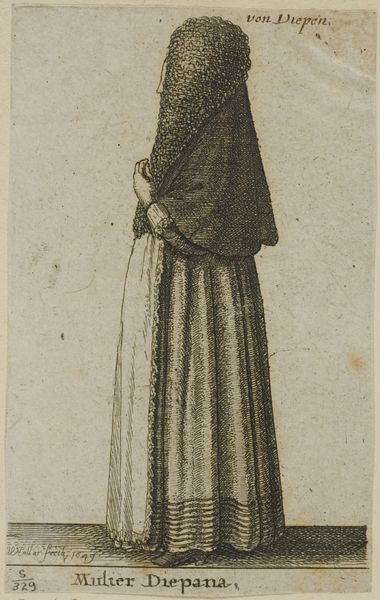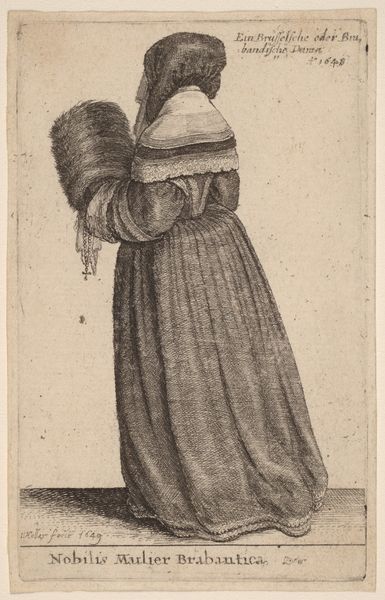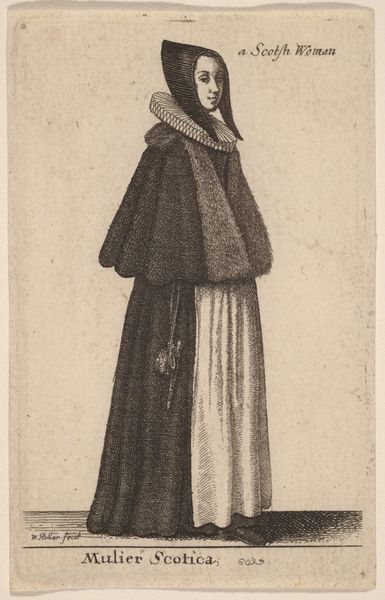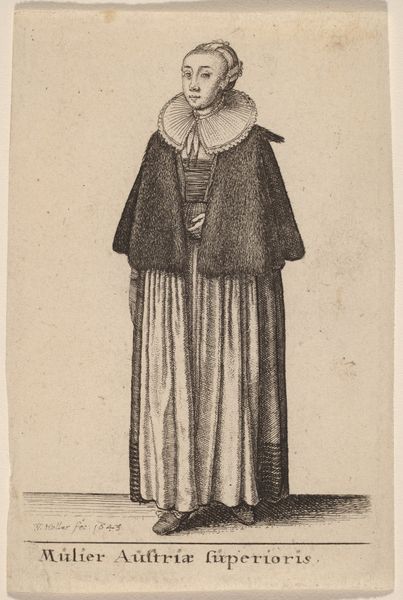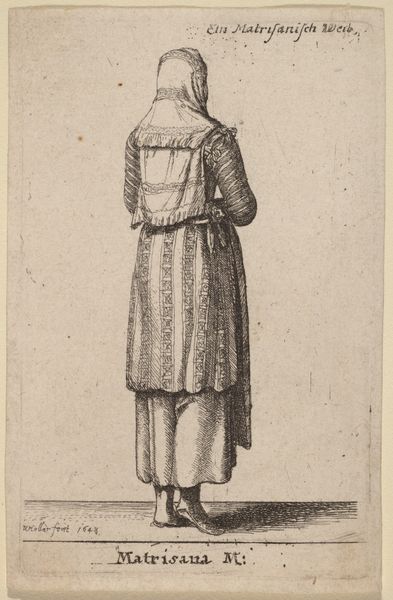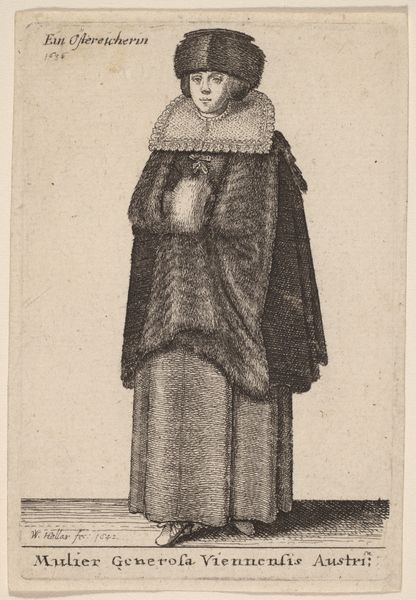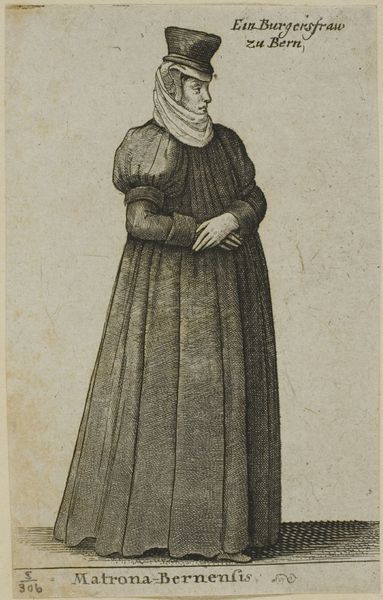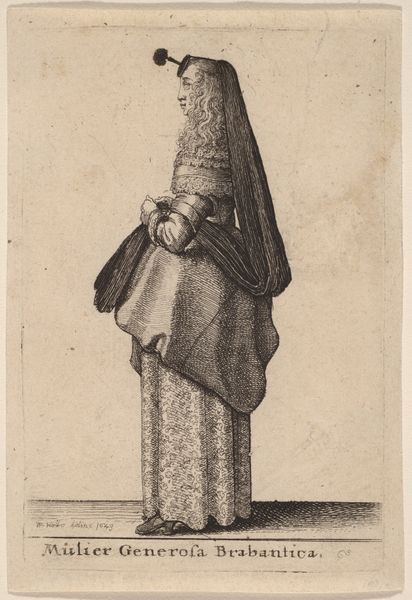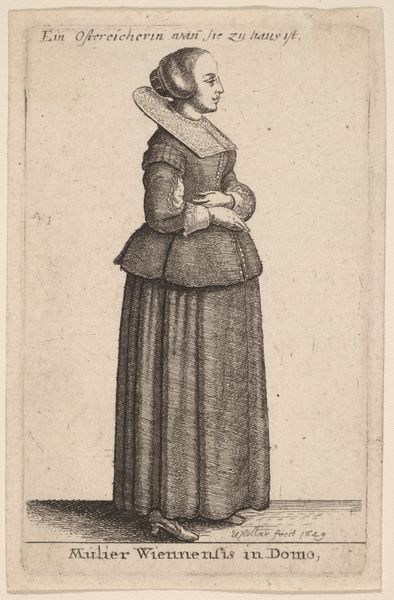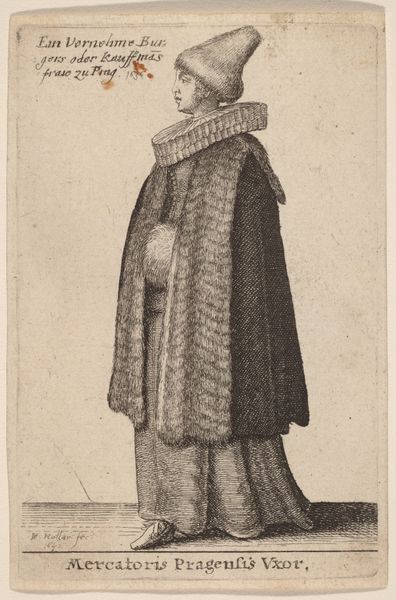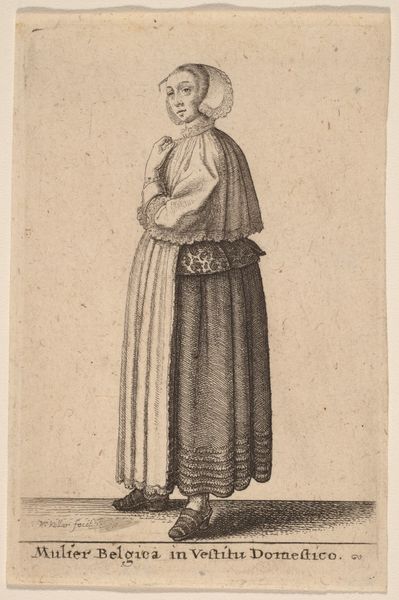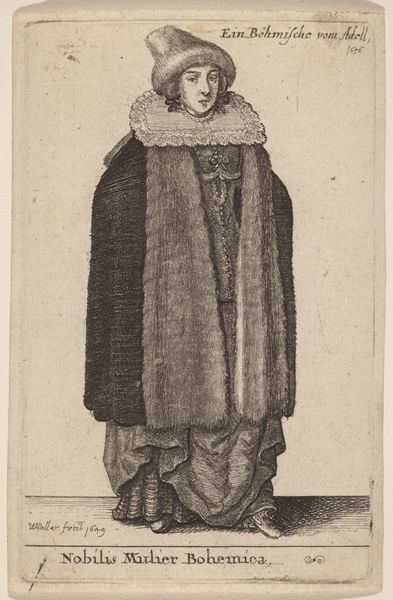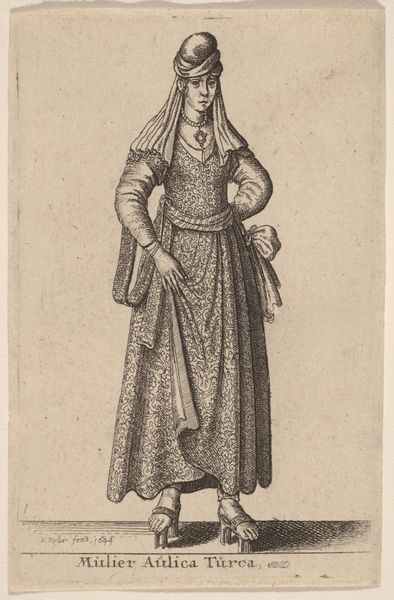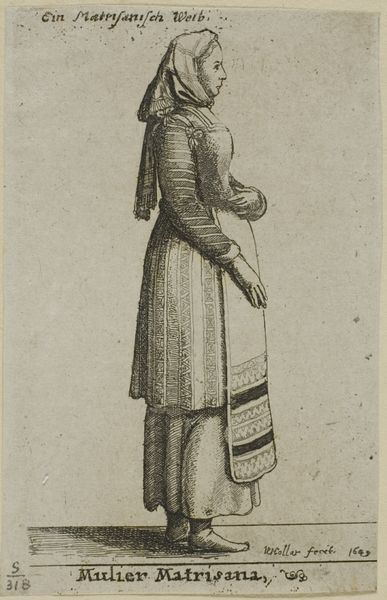
print, engraving
#
portrait
#
baroque
# print
#
genre-painting
#
engraving
Copyright: National Gallery of Art: CC0 1.0
Curator: Here we have Wenceslaus Hollar’s 1649 engraving, Mulier Diepana, which translates to "Woman of Dieppe." What strikes you about it? Editor: Immediately, it’s the contrast. The delicate, almost fragile rendering of the woman's face against the dramatic fur collar, which seems to swallow her. It gives an impression of constraint and perhaps even vulnerability. Curator: A keen observation. Hollar masterfully employs the engraving technique to define texture. Notice the dense, almost chaotic, lines illustrating the fur juxtaposed with the clean, flowing lines defining the fabric of her gown. It creates a palpable sense of weight and volume. Editor: It’s precisely that dramatic contrast that intrigues me. Given the era, could that imposing collar symbolize societal expectations stifling female agency? Is Hollar commenting on the restrictive roles placed upon women, even within regional identities, during this period? It would be fascinating to situate this image within feminist perspectives on early modern life. Curator: That’s a compelling interpretation. Yet, one cannot ignore the detail given to every aspect of the woman’s attire. The lines suggesting the fall of light across her dress, the subtle crosshatching to create the texture of the fur – it suggests an appreciation, even a celebration, of visual form. Editor: True, the artist’s intention remains multifaceted, doesn’t it? Still, viewing this piece through a critical lens allows us to ask urgent questions about the gendered constructs embedded within even seemingly simple portraiture. How might a contemporary viewer interpret this depiction of early modern womanhood, navigating power dynamics in the 17th century? Curator: Indeed, a detailed formal study brings forth not just the skill of the engraver but also allows for conversations around identity, societal structure, and more broadly, power itself. Editor: Absolutely. Hollar's rendering compels us to interrogate the multifaceted relationships between representation and lived experience, and the gaze we bring forward.
Comments
No comments
Be the first to comment and join the conversation on the ultimate creative platform.
